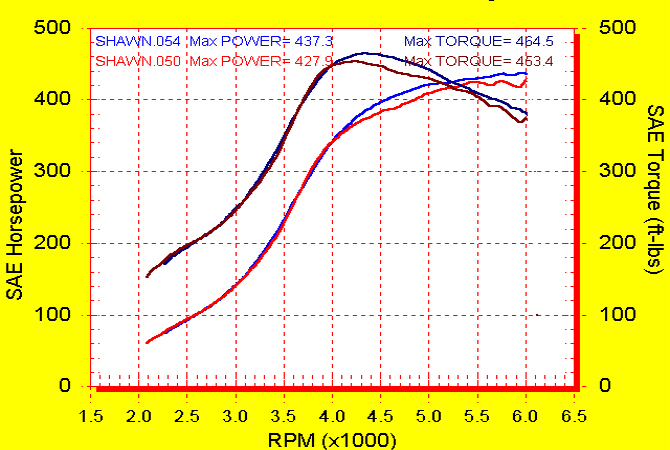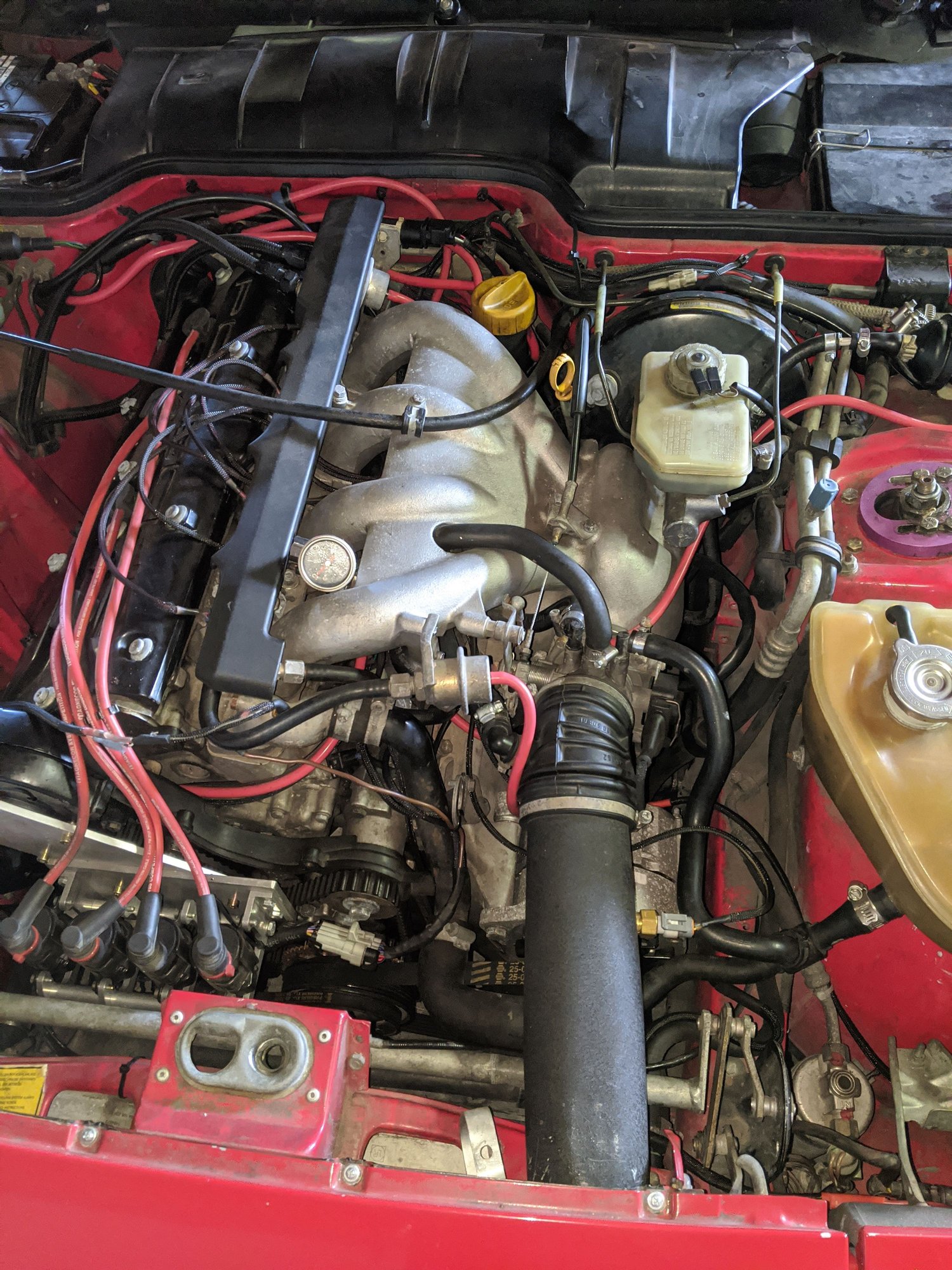VEMS
#46
Addict
Lifetime Rennlist
Member
Lifetime Rennlist
Member
Join Date: May 2001
Location: Hotlanta - NE of the Perimeter
Posts: 12,269
Received 266 Likes
on
153 Posts
The above post illustrates, in part, my basic question -
Knowing that the cross sectional area of various parts of the intake system vary - what is the optimal system? Obviously, mounting a 65mm Mustang TB doesn't seem to be helpful.
Knowing that the cross sectional area of various parts of the intake system vary - what is the optimal system? Obviously, mounting a 65mm Mustang TB doesn't seem to be helpful.
#47
Throttle body size, in terms of throat diameter, needs to be properly sized to the displacement of the engine. If the throttle body is too small, air velocity is faster, but volume is often insufficient. If the throttle body is too large, the air velocity is typically too slow, but more air is drawn into the engine.
An accepted formula for determining throttle body size in millimeters is based on engine displacement, measured in cubic inches of displacement (ci):
Throttle Body Size (mm) = √ (ci x 196.3 x RPM at max. hp) / 67547
Where:
196.3 = math constant
67547 = math constant
For Instance, let's say that the engine features 183 ci, and this engine is expected to reach maximum horsepower at 6200 rpm. Using the formula:
(183 x 196.3 x 6200) / 67547 --> √3297.288 = 57.422 mm
60mm TB on a 3.0l Engine should be enough in theory
#49
Rainman
Rennlist Member
Rennlist Member
TB sizing is tricky and not directly related to displacement or power output.
For example the Ford 4.6 has a 65mm throttle but a 2.0L Honda K-series is 64mm stock. And the Ford 3.5 V6 from the last decade used the same TB as the 4.6 V8.
Bear in mind that the "throttle bore" is a certain diameter but you have to subtract the shaft from the cross section area to get actual airflow area unless the shaft is heavily streamlined.
Typical TB shaft is ~8mm so in this case on a 65mm tb makes for ~520 sqmm area (likely less really because it's rounded not square but lets make math easy here)
Area of a 65mm circle minus the 520sqmm shaft is ~2800 sqmm.
A 64mm circular hole (manifold opening) is ~3200 sqmm...so the Ford 4.6 65mm TB wouldn't be so mismatched after all.
FWIW I tried a 60mm TB on my 2.5 NA when doing the MAF dyno testing years back and got -0- gain anywhere vs stock 55.
For example the Ford 4.6 has a 65mm throttle but a 2.0L Honda K-series is 64mm stock. And the Ford 3.5 V6 from the last decade used the same TB as the 4.6 V8.
Bear in mind that the "throttle bore" is a certain diameter but you have to subtract the shaft from the cross section area to get actual airflow area unless the shaft is heavily streamlined.
Typical TB shaft is ~8mm so in this case on a 65mm tb makes for ~520 sqmm area (likely less really because it's rounded not square but lets make math easy here)
Area of a 65mm circle minus the 520sqmm shaft is ~2800 sqmm.
A 64mm circular hole (manifold opening) is ~3200 sqmm...so the Ford 4.6 65mm TB wouldn't be so mismatched after all.
FWIW I tried a 60mm TB on my 2.5 NA when doing the MAF dyno testing years back and got -0- gain anywhere vs stock 55.
#50
If you're running a forced-induction system, throttle body size becomes slightly less critical, since the supercharger or turbocharger forces air into the engine. The goal here is not to create a too-small bottleneck restriction for airflow. Air pressure, as well as air density, is approximately twice as high in a turbo setup as compared to a naturally aspirated engine, so in theory you can use a smaller throttle body for a turbo as compared to a naturally aspirated setup.
#51
Rainman
Rennlist Member
Rennlist Member
Good thoughts in here.
https://rennlist.com/forums/944-turb...eal-world.html
And here's a back to back dyno of refresh951's 2.9L car, with stock 55mm 951 TB vs a Ford 4.6 TB.

https://rennlist.com/forums/944-turb...eal-world.html
And here's a back to back dyno of refresh951's 2.9L car, with stock 55mm 951 TB vs a Ford 4.6 TB.

#52
Rennlist Member
How does this stack up against the swinging gate (AFM) found in the unmodified/earlier cars? probably the AFM puts less airflow into the engine? If and when it works?? just wondering. Not sure I want to invest in a VEMS system yet..However if anyone out there knows about a standalone ignition (only) system for a four cylinder engine. pls comment..Thanks.
#53
Rainman
Rennlist Member
Rennlist Member
Rich,
the AFM is the worst thing about a 944.
Anyone wanting a responsive, fun to drive car should toss it in the trash immediately so they can install a MAF of MAP (VEMS or Megasquirt) conversion.
JMHO..
the AFM is the worst thing about a 944.
Anyone wanting a responsive, fun to drive car should toss it in the trash immediately so they can install a MAF of MAP (VEMS or Megasquirt) conversion.
JMHO..

#54
#55
Here's a thought, I've had a hard time with figuring out the icv. That bypasses the throttle plate, right? I wonder if it's not open at WOT and it's losing that small extra passage to the intake and the systems volume depends on it?



